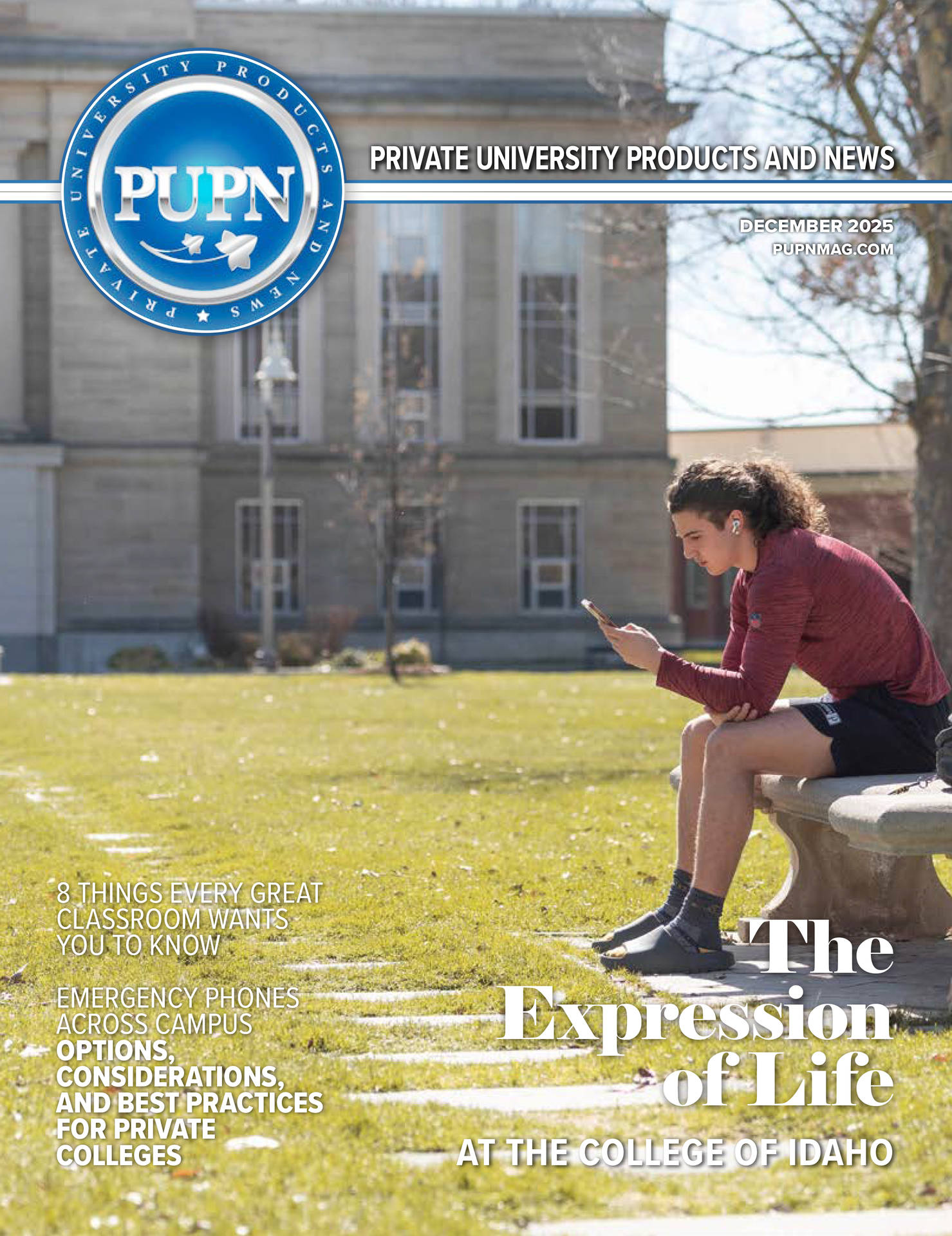Understanding the needs of neurodiverse learners and designing learning spaces with them in mind has become a critical consideration for education. Awareness about the number of neurodiverse students in higher education is growing. According to the National Center for Education Statistics, in the 2019-2020 academic year, 11 percent of postsecondary students identified as neurodiverse, and general research suggests that as much as 20 percent of the general population may be neurodiverse.
As educators and administrators strive to support students, the role of classroom furniture has become increasingly significant. Well-designed furniture can transform a standard classroom into a versatile, inclusive space that follows universal design for learning principles—a model which emphasizes accessibility, flexibility, and efficiency in pedagogical methods.
Flexible Furniture Embodies Universal Design for Learning Principles
The arrangement and type of furniture in a classroom can significantly impact how students engage with the material and with one other. Traditional fixed desks and chairs do not offer the flexibility needed to accommodate various learning styles and activities. In contrast, furniture that can be easily reconfigured allows for both individual focus and collaborative work, catering to diverse learning preferences.
For neurodiverse learners, the ability to choose and adapt their workspace can reduce anxiety and increase comfort. According to a 2024 Journal of Occupational Therapy Education article, flexible seating and classroom arrangements, as well as the opportunity to learn both in groups and independently, were the among the most beneficial features of classrooms for neurodiverse (and neurotypical) students.
Designing for neurodiverse students presents opportunities for colleges and universities to adopt responsive design principles that benefit their entire student population. Recent research has shown that flipped classrooms, problem-based learning, metacognition exercises, and personalized delivery of classroom materials enhance all student outcomes. For neurodiverse students, these modern takes on education are particularly vital to success.
Neurodiverse Learners
Designing for neurodiverse learners involves understanding and integrating features that address their specific needs:
1. Flexible layouts: Furniture that can be rearranged quickly and easily supports different teaching methods and learning activities. This flexibility is especially beneficial to neurodiverse students who may need a change in environment to stay engaged.
2. Sensory considerations: Reducing sensory overload is crucial. Furniture with soft edges, calming colors, and tactile surfaces can help create a soothing atmosphere. Additionally, options like noise-reducing materials and acoustic privacy panels can minimize distractions for students who are sensitive to auditory stimuli.
3. Individual and collaborative spaces: Providing a variety of spaces that cater to both individual work and group activities is essential. Some students may need a quiet corner to concentrate, while others might benefit from collaborative tables where they can interact with peers.
Case Study: SMARTdesks Outfits Pierce Autism Center at Touro University Nevada with Collaboration Tables
SMARTdesks partnered with the Pierce Autism Center (PAC) at Touro University Nevada to create a supportive and engaging environment for neurodiverse learners. Much can be learned from the results.
The Pierce Autism Center provides daily support and services to children with autism, primarily through referrals from schools, Applied Behavior Analysis (ABA) therapy programs, and neurological or developmental pediatricians. The center’s mission aligns with Touro University’s broader commitment to healthcare and education, focusing on creating inclusive, therapeutic environments that cater to the unique needs of each child.
When Touro approached SMARTdesks to create a responsive space for these students, the need for a modular, reconfigurable solution became evident. SMARTdesks iGroup tables, which are triangular, moveable, and feature writable surfaces, were the ideal choice.
Implementing the iGroup tables has significantly enhanced the functionality and versatility of the PAC’s learning spaces. The staff appreciates the ease of cleaning the tabletops, which feature a writable whiteboard surface. This not only facilitates a greener approach by reducing paper waste, but also adds an element of fun and interactivity for the students, who enjoy writing and erasing directly on the tables. The multi-sensory effect of writing with dry-erase markers and the ability to easily erase mistakes accommodate the needs of neurodiverse students.
The PAC uses the iGroup tables in various ways throughout the day. In the afternoons, visiting K-12 students utilize the tables for homework, games, and other social group activities. The flexibility and mobility of the tables, equipped with wheels, allow staff to reconfigure the layout easily to suit different needs. The tables can be grouped into sets of three for small group work or lined up for larger activities, providing an adaptable learning environment.
According to Lisa Kunz, PAC’s director, the tables have become an integral part of the center’s daily routine. Their adaptability supports individualized attention, while their durability and ease of maintenance help create a more efficient and enjoyable learning environment. The PAC also engages with the outside community in its learning spaces, making the need for responsive and reconfigurable furniture even more pressing. Students from the University of Nevada, Las Vegas (UNLV) have worked with PAC students in the past, and more recently, the center hosted the Nevada Women’s Philanthropy organization, which used the iGroup tables for interactive games and activities with the children.
The Pierce Autism Center’s collaboration with SMARTdesks demonstrates the significant benefits that well-designed, flexible furniture can bring to educational settings. By incorporating a modular furniture solution, the center has enhanced its ability to provide a supportive and engaging environment for all members of the academic community.
Specialized Solutions for a Changing World
Facilities managers at universities around the globe face a consistent challenge. How can they adapt to the ever-shifting requirements of teaching and learning, offer a variety of educational environments, and remain within budget for mission-critical upgrades? This trifecta of demands is why maintaining a long-term relationship with a technology-and-furniture-integration partner is essential to a college or university’s success.
The Pierce Autism Center at Touro is just one example of how SMARTdesks works with clients to furnish their learning spaces as they change over time. The increased recognition of neurodiversity in higher education makes designing responsive learning environments essential in 2024. SMARTdesks has worked with Touro University Nevada since 2005, from podiums of the past to collaboration tables of today. Particularly as technology in education continues to evolve, the benefits of an ongoing relationship between universities and furniture suppliers prepared to accommodate these changes become ever more evident.










